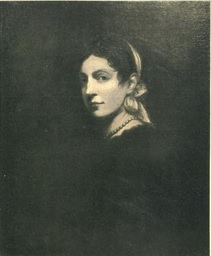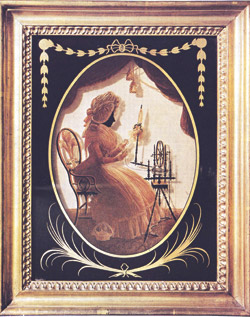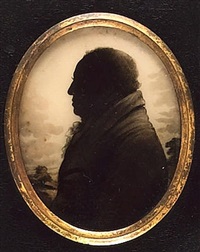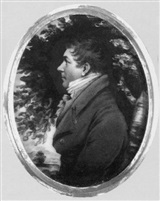Jane Beetham Read facts for kids
Quick facts for kids
Jane Read
|
|
|---|---|

John Opie, Jane Beetham, 1790–1800, Brompton Consumption Hospital collection
|
|
| Born |
Jane Beetham
c. 1773 London
|
| Died | 16 January 1857 London, England
|
| Nationality | British |
| Education | |
| Known for | Silhouette and miniature portraits |
| Spouse(s) | John Read |
Jane Beetham Read (born around 1773 – died January 16, 1857) was a talented English portrait painter. She started her career in the 1790s. Jane worked in her mother's studio, creating special silhouette portraits. She also learned from a famous artist named John Opie. Her paintings were shown at the important Royal Academy of Arts between 1794 and 1797.
Contents
Jane's Early Life
Jane Beetham was born in London around 1773. Her parents were Edward and Isabella Beetham. Her grandfather was William Betham from Little Strickland, England. Mary Matilda Betham was her cousin.
Jane was the first of six children. Her siblings included William, Harriet, Charles, Cecilia, and Alfred. The Beetham family lived in different parts of London. In 1785, they moved to Fleet Street. Here, her mother ran a studio where she made silhouette portraits. Her father sold his special washing machines in the same building.
Becoming an Artist
Jane Read painted portraits from the 1790s until 1815. In the early 1790s, she painted silhouettes for her mother's business. These were usually painted on glass. Jane's early work was similar to her mother's style. Her silhouettes were often placed in frames made of pearwood or papier-mache.
By the late 1790s, Jane started her own art business. She began using her own special labels for her work. As she became more experienced, she also used fancy brass or ormolu frames.
Learning from a Master
Jane studied painting with John Opie, a well-known artist. She was his only female student. Opie even painted a portrait of Jane between 1790 and 1800. Jane also painted a portrait of Dr. Priestly, using one of Opie's paintings as a guide.
John Opie wanted to marry Jane, but her family did not agree. Soon after, Jane married John Read.
Developing Her Style
As Jane started painting miniature portraits, she created her own unique style. She often painted dark trees or plants around the faces of the people in her portraits. She used different painting methods to show bone structure and facial features. She used both thick and thin brush strokes. Jane also used special needles and brushes for tiny details. She even created her own method for making art called aquatint.
Exhibiting Her Work
Jane showed her portraits at the Royal Academy in London for four years in a row. This was from 1794 to 1797. She displayed 15 paintings in total. Some of her famous works included Cordelia Angelica Read, A Lady Reading a Letter, and King Lear and Cordelia.
Family Life

Jane married John Read, a lawyer from London, around 1797 or 1798. He was older than her and quite wealthy. They had a daughter named Cordelia Angelica Read. The family lived on Lamb's Conduit Street.
Jane's father passed away in 1809. His money was shared equally among Jane's mother and all six Beetham children.
John Read died in 1847. After his death, Jane and her daughter Cordelia lived together in Stamford Street, London. People sometimes called them the "old sisters" because of their unusual behavior. Cordelia never married.
Jane died in London on January 16, 1857. When Cordelia passed away in 1871, she left her mother's paintings and a large sum of money to the Brompton Consumption Hospital. This money helped build an addition to the hospital. A special memorial was placed there to honor Cordelia. The hospital also received the Read family's art collection. This included paintings by Opie and Jane Beetham herself. Some paintings were sold to help pay for restoring others. The hospital kept paintings that Opie had made of his mother, Jane, and her sisters.
Images for kids
-
John Opie, Jane Beetham, 1790–1800, Brompton Consumption Hospital collection
-
Jane Read, Portrait painted on glass of Mrs. Maria Fitzherbert, a widow who married George, Prince of Wales (later King George IV).







